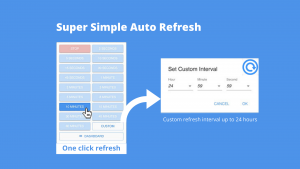Industry 4.0 Technology revolutionizes how real estate companies improve and distribute their marketing. Such businesses integrate new technologies into their production facilities and operations, including the Internet of Things, cloud computing and analytics, and Artificial Intelligence and machine learning. 64% of surveyed CxOs from outperforming industrial product companies already have it.
They have begun investing in AI/cognitive capabilities. At the same time, 67% of surveyed industrial products CxOs expect AI/cognitive abilities to play an essential role, and 89% of watched CxOs from outperforming industrial products companies say they plan to invest in AI/cognitive for quality control. Generally speaking, the industrial products industry is awash with data.
Instrumentation, sensors, machinery, automation systems, production and operation, maintenance records, and health and safety applications collectively produce a constant data flow. Industrial product enterprises need technology that supports the vertical delivery of insightful data throughout the organization to meet consumer needs and aim for continuous process improvement.
To address operating and market concerns—and deliver on the promise of Industry 4.0—a small group of financial outperformers uses the cognitive abilities of Artificial Intelligence (AI) to do things differently. This article will explore how developing bright apartments/homes provides an incredible opportunity for the real estate industry to enter the fourth industrial business revolution.
The Steps For Applying Industry 4.0 Technology In Finding Ideal Home Apartments
The Internet of Things, natural language processing, robotics, virtual reality, augmented reality, artificial intelligence, and big data are some of the terms that make up the so-called fourth industrial revolution. Through digitalization, integrating data processing technologies and intelligent software, we try to predict and control the aspects that generate the most value in the production chain.
This concept aims to guide companies towards better communication and internalization, greater sustainability, and respect for the environment. Realistically, industry 4.0 and its digital online transformation is a cultural change our society is experiencing through technology. Sure, this concept implies a new organization of the means of production that is entirely revolutionizing itself.
Especially the processes of the companies of the 21st century. Technically, Industry 4.0 is being implemented in all sectors, including the real estate sector. Marketing and sales tools are emerging that facilitate communication and access to new audiences, provide greater personalization and customer service and provide important information that can be analyzed and exploited later.
Resource Reference: How A Creative Agency And Technology Helps Automate Workflow
On the one hand, this new scenario proposes a positive transformation of promoters, real estate companies, and companies working in the real estate sector. On the other hand, this will result in a fantastic user experience and allows the buyer to see, navigate, and set up their home, even before the building has been built. Perse, this helps empower the actual real estate business plan outcomes.
Generally speaking, in the era of Industry 4.0 technology, the rapid development of the niche has brought about new conveniences and opportunities in finding ideal apartments or homes. In other words, from intelligent mobile applications to artificial intelligence and the Internet of Things, Industry 4.0 technology has revolutionized how we research, select, and enjoy living spaces.
Next, we will explore how to leverage these advanced technologies. More so to find ideal apartments or homes in the United States, a promising real estate market. With that in mind, below are a few Industry 4.0 Technology innovations for real estate.
1: New tools for new publics in the real estate sector
The profound change that the real estate sector is experiencing is represented in the new home buyers. We refer to the so-called’ Millennials’ born between 1980 and 2000. This public is characterized by having a multifaceted, enterprising, and deeply digital personality. They are demanding immediacy, and they look for a personalized purchase.
One of the characteristics of the reactivation of the sector is the progressive incorporation of this public into the real estate market. This type of client presents some interesting characteristics, such as an increase in their economic resources and a greater capacity for financing. The Internet, social networks, real estate portals, and other platforms have become powerful marketing tools.
Resource Reference: 8 Reasons To Hire Top Real Estate Agents When Selling A Home
This allows real estate businesses to sell more and better. The scope, availability, direct interaction with the public, and cost savings are some of the fundamental characteristics of these media. Let’s take the example of a real estate sales office. In most cases, these establishments have a mid-range computer with Internet access, and in some cases, they have high-end computers.
These computers are capable of playing high-resolution programs and videos. It is essential to know the system’s technical characteristics since the program’s graphics quality will vary depending on these characteristics. If a user accesses a device in the street, it is usual that he does it through the web or downloads the app. The primary condition is to know the device’s powerfulness.
2: Smart mobile applications and dedicated websites
Innovative apps and dedicated websites have revolutionized our search for apartments or homes. They emerge as irreplaceable tools. In today’s digital age, where smartphones are ubiquitous, users can conveniently download real estate search apps and navigate through specialized websites to acquire comprehensive and detailed information regarding the available properties.
The advent of these innovative apps has brought forth a myriad of features that enhance the overall searching experience. One notable feature is the intelligent search functionality, which allows users to refine their search criteria based on specific preferences such as location, price range, amenities, and more. We need to harness the power of advanced algorithms and machine learning.
Resource Reference: 15 Elements Of Modern Web Design That You Should Know
By doing so, these applications can quickly present tailored results that align with the user’s unique requirements, saving valuable time and effort. Moreover, these platforms offer seamless photo viewing capabilities, enabling prospective buyers or renters to get a virtual glimpse into the properties they are interested in. There are also high-resolution images and comprehensive descriptions.
They all empower users to visualize the layout, design, and overall ambiance of the apartments or homes, aiding in making informed decisions. Another critical aspect of these applications is the integration of ratings and comments from other users.
This social component adds an extra layer of transparency and trust to the search process. By accessing previous tenants’ or homeowners’ feedback and experiences, users can gauge a particular property or landlord’s satisfaction level and drawbacks.
3: Artificial intelligence complete and machine learning
Today, Artificial Intelligence Complete and Machine Learning (ML) are pivotal technologies that have revolutionized finding ideal apartments or homes in the United States. These advanced technologies possess unparalleled capabilities to analyze and organize vast amounts of data, offering personalized recommendations tailored to individual users’ requirements and preferences.
One of the remarkable aspects of AI and ML in the real estate sector is their ability to predict and analyze price trends and market growth. By leveraging historical data, market indicators, and other relevant factors, AI systems can provide valuable insights into the fluctuations and potential future developments in the real estate market.
This information empowers searchers to make informed decisions, whether timing their purchase or identifying investment opportunities. Machine learning, on the other hand, excels at understanding and knowledge from users’ preferences and search history. These algorithms can analyze patterns, identify correlations, and recognize the specific features that appeal to users.
Resource Reference: How Natural Language Processing (NLP) Helps In Communication
More so when searching for apartments or homes. By comprehending individual preferences, machine learning algorithms can generate recommendations that align with users’ desired location, amenities, pricing, and other criteria. This personalized approach significantly enhances the search experience, saving users time and effort by presenting suitable choices that match their needs.
Furthermore, AI and ML technologies can provide valuable insights beyond the essential search criteria. For instance, they can analyze commute times and proximity to amenities such as schools, restaurants, and parks and consider factors like safety and neighborhood demographics. AI-powered platforms can provide comprehensive recommendations considering the desirability.
4: Internet of Things and intelligent living experiences
The Internet of Things (IoT) has revolutionized finding apartments or homes in the United States, offering many significant benefits to seekers. IoT-enabled devices can collect and transmit valuable information about the living environment to everyone involved.
This wealth of data empowers individuals to make informed decisions by assessing whether a particular apartment or home aligns with their needs and preferences. By leveraging IoT technology, seekers can gain insights into a property’s ambient conditions before entering. For example, they can remotely access real-time data on temperature and humidity levels.
At the same time, they can ensure that the living environment meets their desired comfort standards. Furthermore, information on natural light can be crucial for those who prioritize a well-lit living space. With these IoT-collected metrics, seekers can evaluate whether a specific apartment or home offers the ambiance they desire, allowing them to narrow their options efficiently.
Resource Reference: Internet of Things (IoT) | What Is It With Key Example Uses?
Additionally, IoT-based smart home systems have become increasingly prevalent, offering enhanced convenience and safety for residents. These systems allow for the remote control and automation of various devices within the home, such as lights, air conditioning, and security systems. Seekers can benefit from the advanced amenities these IoT-connected homes provide.
As a result, this enables them to find an ideal living space that aligns with their high-tech lifestyle. With IoT-powered smart home systems, individuals can remotely adjust the lighting to create the desired ambiance, even before moving in. They can also regulate the temperature and air conditioning, ensuring a comfortable and energy-efficient living environment.
Moreover, IoT-based security systems offer peace of mind by allowing remote monitoring and control of surveillance cameras, door locks, and alarm systems. This level of control and security adds an extra layer of convenience and safety for seekers, making their search for apartments or homes in the United States more convenient and empowering.
5. Integration for the qualification study of real estate entities
The real estate market comprises a broad and diversified group of companies. Real estate consultants, promoters, financial entities, and investment funds have their vision of the sector. A typical situation would be accessing the web from their desktop or laptop computer. In this case, we must segment it into mid-range and high-end computers. For instance, there are traditional entities.
These entities continue to rely on the usual methods and resist adopting new technologies. In addition, there are also conservative entities. These companies prefer to “follow the industry” rather than “direct” it. They choose to see if the new methods work, and when they know they work, they adopt them. The path these entities follow is too slow, considering the mature real estate sector.
It is an excellent time to offer disruptive products. Usually, the magnitude of the projects is associated with an increase in risk. However, technology is used precisely to minimize this problem, reduce costs, and increase safety and precision in the execution thereof. Unfortunately, there is a lack of a clear technological strategy by companies that do not adopt this methodology often.
Resource Reference: How Industry 5.0 Workplaces And The Internet of Things Merge
As a result, it denotes a considerable delay in the processes. At the same time, we have innovative companies committed to different business models, understanding the needs of their public, and offering products adapted to current trends. They are characterized by anticipation of the market, knowledge of the sector, and competition differentiation. There is quite a lot to implement here.
For instance, Big Data, robotics, Collaborative Robots (Cobots), home automation, the Internet of things, virtual and augmented reality, interactive applications, social networks, and drones are some technologies that accompany the new real estate scenario. The reactivation of the sector should be accompanied by a technological incorporation of guarantees, which improves competitiveness.
As well as optimizing the image of the companies that carry out their activity here. Experience shows that using these systems speeds up the sale of properties and offers a modern and up-to-date picture of the company. An example of this is the remote access virtual reality provides to many potential buyers, facilitating dissemination and increasing the commercialization of real estate.
In Conclusion;
The massive use of these devices has greatly enhanced the ability of users to obtain information related to the real estate sector, reproduce visual elements, or launch interactive applications. Studies indicate that 81% of European citizens consider the Internet the best platform to look for a home, and 70% of the traffic comes from mobile devices. However, segmentation is necessary.
Mainly depending on the quality of the devices. Remember, not all devices can access the latest generation programs or applications, such as those developed with virtual technology or represented with 3D Printing Technology and 3D Scanning scenarios. We can differentiate mid-range computers and high-end computers. The plans from which users access information also vary.
They can do it with an interactive screen in a sales office, a smartphone on the bus on the way to work, or at home with a desktop computer. In a nutshell, Industry 4.0 Technology has transformed how we search for ideal apartments or houses in the United States. There are intelligent mobile applications and dedicated websites to artificial intelligence, machine learning, and the Internet of Things.
As such, we can access new tools and utilities for gathering information and selecting suitable living spaces. Applying Industry 4.0 in real estate is vital. Primarily to help find ideal apartments or homes while saving time and effort and delivering a better experience for seekers. With continuous advancement, we can expect the housing search future to be even more convenient and intelligent.






